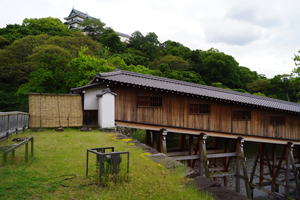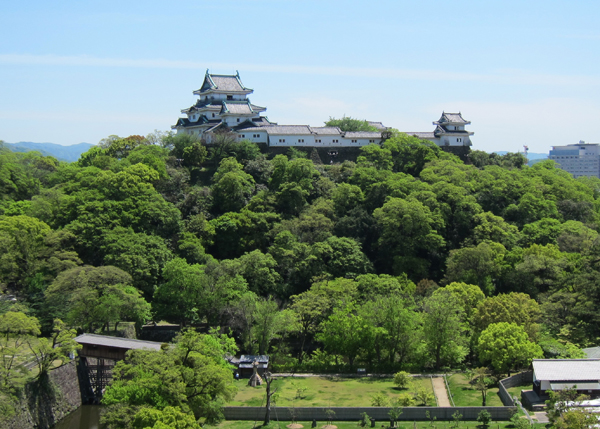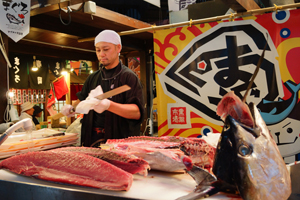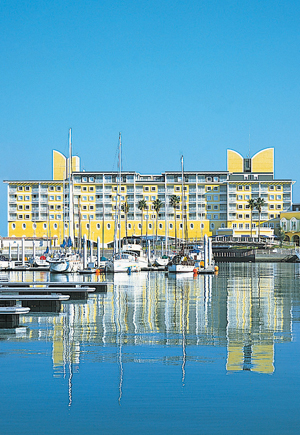As well as the abundance of nature and spirituality in Wakayama Prefecture, the capital, Wakayama city, gives you a multitude of reasons to visit. Firstly, it is the most densely populated area of Wakayama, with around 40% of prefecture’s population living in the city, so if you are after a little nightlife it is the place to go. While it is obviously much easier to find a decent bar, restaurant or tourist spot without having to commit to a long drive, there are many relaxing hot springs, even in the city.
If you go for the food, you won’t be disappointed. Fresh tai (red sea bream) and shirasu (the tiny white sardines normally served on rice) will keep any fish-fanatics happy. Noodle fans will be pleased to hear that Wakayama City prides itself on the finest ramen in Japan; slightly thinner than usual noodles served in a thick pork and soy sauce broth with an amazingly meaty taste.
Besides the food, perhaps the biggest draw to Wakayama City is the castle, which is perched on top of Mt. Torafusu, at the mouth of the Kinokawa River. Originally built in the 16th Century, it was destroyed by bombing in the second world war. It was rebuilt 13 years after the war had ended using mainly concrete, making it more durable and less susceptible to disasters than traditional wood.
 At the base of the castle itself there are many cherry trees, so coming during the spring when they are in full bloom is obviously a great idea. There is an annual festival in early October, which sees around 8,000 candles set inside cut bamboo and spread throughout the grounds. It is said to be a magical festival; one which throws a whole new light (literally) on Wakayama City’s biggest attraction.
At the base of the castle itself there are many cherry trees, so coming during the spring when they are in full bloom is obviously a great idea. There is an annual festival in early October, which sees around 8,000 candles set inside cut bamboo and spread throughout the grounds. It is said to be a magical festival; one which throws a whole new light (literally) on Wakayama City’s biggest attraction.
There are a lot of things to see inside the castle grounds. The Ohashi Roka is a restoration of a rather unique bridge, see the picture, on the right. With its sharp incline and high walls, it feels like a mysterious ancient corridor.
In fact, it had a rather important function, namely that of keeping the identity of people visiting the castle a secret. The bridge has shallow steps to help those wearing a kimono to cross without having a nasty trip. It is well worth a visit but be advised, you have to take off your shoes before crossing.
The gardens that surround the castle are also captivating, with maple trees and a tranquil pond carefully kept pristine. If you want to soak up the surroundings, there is a small tea-house, known as Koshoan, which serves Japanese tea the traditional way.
There is no need to worry about breaking etiquette, as the staff are extremely patient and keen to teach you about the Japanese tea ceremony. A drink costs just 450 yen, so be sure to make some time and visit.
If you are wanting to stay in the city centre, the best spot could be the Daiwa Roynet Hotel, which is a stone’s throw away from the castle and is also the tallest building in the city. Room prices vary but if you are feeling flash you can get a huge suite on the 20th floor, with a great view of the castle, for a mere 20,000 yen (per room, not per person). Twins and doubles cost 13,000 yen while a single is only 8,000 yen. It is a little cheaper to stay in a room on the side of the hotel without a view of the castle but spending the extra couple of hundred yen is worth it, especially as the castle is lit up beautifully at night.
Where the city meets the coast you can find a great abundance of things to do. Your first port of call should probably be the Kuroshio market, which stocks a selection of local specialties including popular food, drink and gifts. You may not be surprised to hear that a large section of the market is designated to fish, the species with perhaps the most pulling power is tuna. If you are lucky, you will see somebody carving tuna and, believe it or not, everyone is offered a free sample.
The best thing about the market is the barbecue area, which is free for everyone to use. Utensils and grills are supplied free of charge, and you have the entire market from which to select your food; most stalls have special deals for those using the area, so you can expect a fresh and affordable meal. It is a great spot for families but also very popular with couples as, across the bay, there is often a fireworks display once the sun has gone down.
Porto Europa, pictured here, is also a great little spot, with European style architecture mixed with a roller coaster, a log flume and other fairground rides. There are always fun little events and displays happening in the park, so be sure to check the timetable to find out more.
If you are really lucky, you may even spot a celebrity or two, as Porto Europa is apparently the “go-to” destination for Japanese TV shows looking for a slice of the Mediterranean.
If you would like to stay in the Marina City area, then your only option is the Royal Pines Hotel, which has a total of 99 rooms, 76 of which boast an ocean view bath. Every room is in keeping with Porto Europa and is styled in a European fashion. The rooms are fantastic but the really big draw of the Royal Pines Hotel is the food, which is truly second to none.
Their chef, Minoru Saito, trained in Italy for four years and is currently the Vice Chairman of the Japanese Italian Food Association.
The food is based on Italian recipes but uses locally produced ingredients, so expect the menu to change seasonally. At lunchtime, you can make the most of Mr. Saito’s talents by enjoying a lunch set from 2,500 yen, which, when we visited, was an impressive six-course meal.
Written by Adam Miller
For more information, visit the Wakayama Prefectural Tourist Board website, here.











